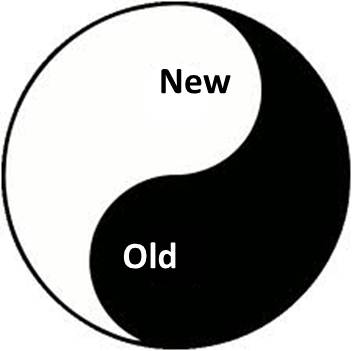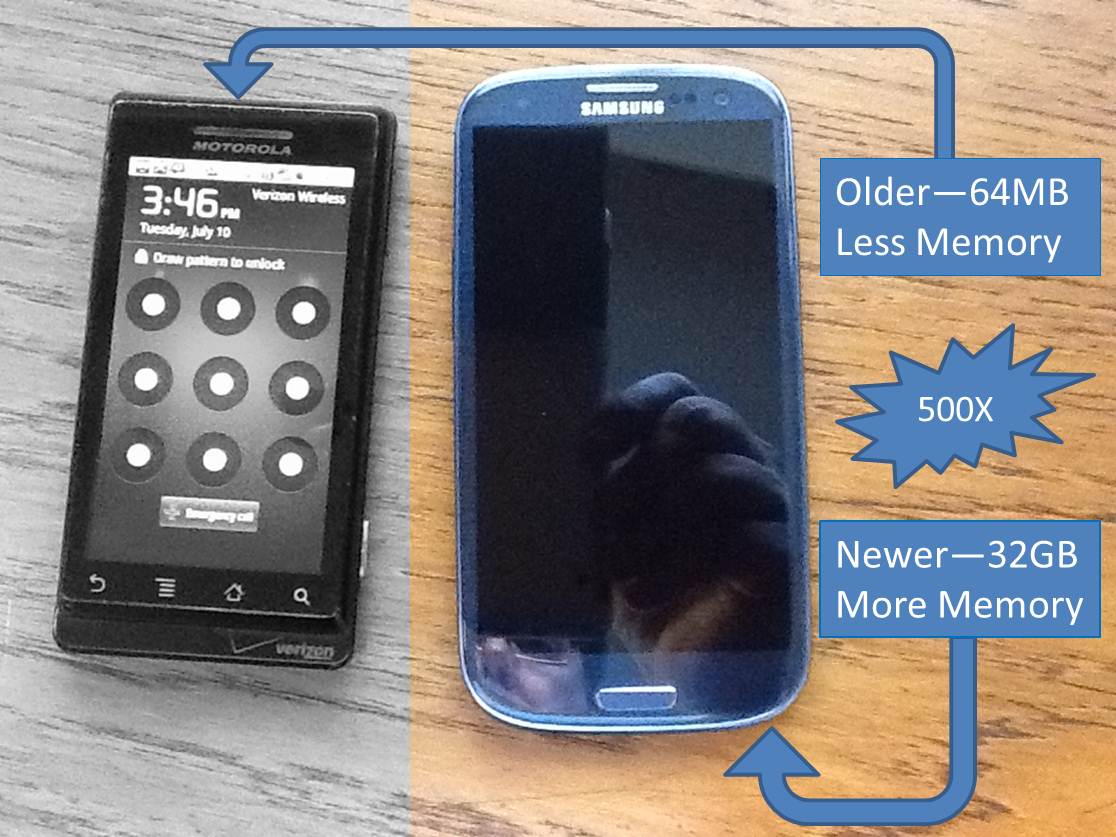Is More Memory For Your Android The Solution?
Some things I’d rather forget, like Kanye West wearing a kilt at the Sandy hurricane relief concert in New York. Other things I remember, like Gwyneth Paltrow at the Oscars in a Tom Ford cream evening column and cape. Awareness of our memory usage and capacity on our mobile devices is like being able to pick the correct item for our wardrobe to wear.
When it comes to wardrobes, we may not have the same designer aspirations as Hollywood Stars, but we definitely look at fit and size in our considerations. The same holds true for our choice of the amount of and the way we use the memory in our mobile devices.
Is a new wardrobe with larger sized items the answer? Maybe, but that’s outside of my scope of expertise. With mobile devices, larger sized definitely, yes—bigger is better.
Most of us would agree, getting bigger sized items in our wardrobe is a less than ideal solution, but very different from getting more memory on our new handheld. At the same time, there is wisdom examining habitual behavioral patterns. For examples in both cases, be careful on diets what you eat and on devices what you sync.
My first Android hand held had 64MB of memory. It was Fall 2009. I thought it was great. My preceding Windows Phone handhelds had less. 64MB worked for a while, letting me explore the Google app store, take pictures, collect and consume data. Soon enough, I had installed App 2 SD to create some memory space because I lost basic functions, like my text messages and phone calls were choked.
I thought App 2 SD was a clever app because it let me move certain applications from device memory to the secure digital card. That worked for a while, having some apps and data onto the SD Card, off of the device, letting me run it again. Some apps didn’t run from the SD Card.
When my device filled up again, my choice was uninstalling applications. That was no fun. In the beginning, I removed apps that weren’t too important, then towards the end of device life, I was forced into choosing to let go of either Twitter or Facebook. It felt like cutting off a limb. That was when I had had enough.
Time For A Tech Refresh
 The second Android device I brought home had 500x the memory of my first device, at 32GB. Coupled with the larger SD Card, I have ample space for apps and data, but I have a premonition that history will repeat itself.
The second Android device I brought home had 500x the memory of my first device, at 32GB. Coupled with the larger SD Card, I have ample space for apps and data, but I have a premonition that history will repeat itself.
Compounding The Data Excesses
Today, you may not anticipate using 500x the amount of memory on your next device, but know this: Technology today will change much in three areas: hardware, software, the network. Over the next two years, these factors coupled with virtualization, will drive the need for more mobile device memory. The ways we will use devices will drastically change too.
Capabilities shipping inside devices today include higher definition Retina Displays, Quad Core Processors, more Mega Pixel HD Cameras. Way more memory is being consumed on these items.
[embedyt] http://www.youtube.com/watch?v=QHAyOtLuqtY[/embedyt]Secondly, another fascinating area in applications is Augmented Reality, using multiple device sensors to enable advanced computer vision, and going way beyond mere gaming use cases. How about virtually wearing new garments when shopping for new clothes? Features in applications being developed include data encryption to handle privacy and security concerns, driven in part by more financial transaction processing on mobile. Lots more memory will be required to deliver these types of applications.
Thirdly, to carry all this additional data from all the new devices, networks will need to become more ubiquitous and intelligent. For a while now, network service providers in the US like AT&T, Sprint and Verizon wireless have been building internet capacity expansion, caused by massive explosion in the number of handheld tablet and smartphone devices. Today we have 4G network coverage build outs, and Wi-Fi enhancements. To meet these higher data transport needs, more memory and processing will be built into the switches, routers, servers, access points, receivers, transmission infrastructure.
In summary, my advice is forget the kilt except on the right occasion, obtain as much memory as possible.
Remediate The Bursting Data Problem On Handhelds
Be sure to check out my upcoming eReport for work out routines and nip and tuck prescriptions to manage mobile device data gluttony.
Side Notes
I invite you to tell us about your stories of enjoyment or frustration using your mobile device, whether you’re snap happy shutterbug or an iTunes sync junkie, there was a time when you loaded up your device. It’d be good to get your lessons learned, any advice for the rest of us.
Please Tell People About Honest Intentions
If you like this article, please Tweet it with the little tweet button below, or tell a friend through the Share and Enjoy buttons below. I have been introduced to these features to make it easier for you to email it to a friend or add it to your favorite social media website. I understand that if you post to Facebook or tweet it on Twitter, that will get more readers here. Many of my thanks in advance for your help. I appreciate it.


